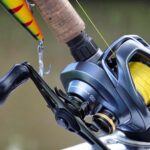Setting up an aquarium can seem to be a complicated thing. It requires purchasing and installing several pieces of equipment. One the most important piece of equipment that any fish tanks should have is fish tank filter system. It is also considered as the basic equipment which is essential to keep the water clean. With the clean water, your fish, especially tropical fish, can survive in the healthy environment. For this reason, a water filter for a fish tank is highly necessary.
Choosing a water filter for the fish tank, however, is not an easy task. You cannot just pick one randomly and install it in your fish tank without any consideration. Bear in mind that every tank and its inhabitants have different requirements. There are many options for water filter available in the market. The abundant options can be overwhelming and make us confused to choose the one works for our particular fish tank. Of course, you don’t make a wrong choice. Because the water filter is a must-buy piece, you should deal with this challenging task of choosing the best filter. Let’s start by learning some different types of the filtration system.
Types of Filtration
- Mechanical
- Biological
- Chemical
Mechanical filtration works by removing unwanted particles by passing aquarium’s water through a particular medium. The most commonly-used medium for mechanical filtration is foam or other media made of sponge materials. These materials can trap the tiny particles so they won’t be able to enter back into the aquarium. You need to replace the foam or sponge regularly to maintain the effectiveness of the mechanical filtration system. When you see the sponge already looks dirty, it means that it must be soon replaced with a new one. Ideally, it should be replaced at least once a week.
The second type is biological filtration. It is considered as the most important filtration process for your fish tank. Unlike mechanical filtration which uses foam or sponge to trap debris and unnecessary particles, biological filtration makes use of beneficial bacteria to convert harmful chemicals into less harmful ones. Actually, this process does not involve filtering anything in removing toxins and dangerous chemicals. It involves a cycle called the nitrogen cycle. Through this cycle, beneficial bacteria break down ammonia into less harmful substances. These substances that are removed from the aquarium through water changes.
The third type is chemical filtration. This system utilizes activated carbon through which water passes to remove dissolved wastes. Like foam or sponge, activated carbon has a porous structure which allows water to flow by while it traps dissolved wastes. It also has an ability to remove odors from the water. For this reason, activated carbon is well-known as the best water and air purification. It is no wonder that it is often used as a part of the water filter for the fish tank. Many hobbyists and aquarium owners use chemical filtration because it is easy to use and considered as an efficient option. Still, you need to change the water regularly to sustain the quality of the water in your tank.
So, which one is the best filtration system for your fish tank? It all depends on the fish tank size, your budget, and particular needs of your fish and plants kept in the tank. It is possible to combine mechanical and biological filtration processes and even add the chemical filtration unit. You can consult to a pet dealer or supply store to help to choose the most suitable filter that works best for your particular fish tank.
In order to perform the filtration system, you will need a water filter for the fish tank. Here are some types of filters available in the market.
Types of Filters
- Corner box filters
- UGV
- Sponge filters
- Power filters
- Wet/dry (trickle) filter
- Canister filter
Box filters are the cheapest among other types of water filter for fish tank. These filters are designed for a small aquarium that holds no more than 10 gallons. You can install it in one corner of the tank, as the name suggests. Because they are fairly gentle, they are best used for fry tanks and hospital tanks. Using the filters, an air stone is pushing air via an air, powering water through filter floss, allowing mechanic water filter. Bacteria will grow over time which eventually filters the water biologically. The weakness of box filters is that they are clearly visible in the tanks. So, if you want a natural and aesthetically pleasing tank, these filters are probably not the best option.
If you are a beginner, one of the best ideas is to use UGF which stands for Under Gravel Filter. UGFs are perfect for beginners because they are relatively maintenance free. Moreover, they are cheap. These filters use a filter plate placed under the gravel. When water is pushed through the gravel, it at the same time pulls particles. These filters are perfect for biological filtration but they rarely work for mechanical filtration as they are prone to clogging.
Sponge filters can be another option although it is not recommended as the main filter. Small breeding tanks and hospital tanks usually use these filters. They are cheap and simple and can serve as good mechanical and biological filters. They are also suitable for a quarantine tank.
The next type is power filters. Many hobbyists prefer these filters for their ability to perform excellent chemical, biological, and mechanical filtration at once. These filters use a chamber and a tube to filter the water.
For the saltwater fish tank, the best option is wet-dry filters. These filters provide excellent biological filtration. Besides, they increase the oxygen level in the water thus maintaining the water quality for a longer period. If you have a large fish population, a wet-dry filter can be a good water filter for fish tank to install.
Final Thoughts
For those own larger fish tanks, nothing beats the fish tank canister filter. This filter has an excellent ability to filter large amounts of water without taking much time. It can be installed underneath the tank to make it out of sight.





